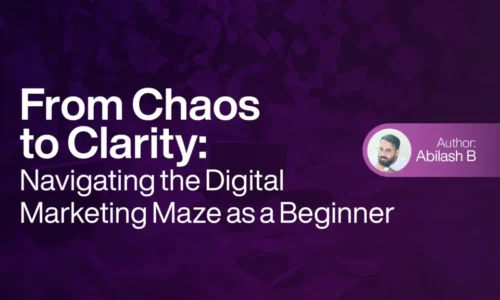Understanding Emotional Marketing
This is emotional marketing; aside from being a strategy that seeks to connect closely the brand with the audience by creating specific emotions, it differs from traditional marketing in that it focuses not only on product features and benefits but also resonates personally with consumers, making them feel joy, nostalgia, or their own version of something similar, and thus building brand loyalty and consumer engagement with finally push for sales improvements while creating a more penetrating brand in a competitive market.
Table of Contents
The Importance of Emotional Marketing
- Building Relationships: Emotional marketing creates strong, lasting relationships between consumers and brands, which leads to a high return on investment in terms of daily customer loyalty and lifetime value. It is usually observed that consumers engage with the brands on an emotional level tend to have better engagement rates and repeat purchase behavior.
- To differentiate: Emotional marketing continues to be effective for brands in saturated markets that make them feel unique. This requires experience; hence it differentiates the brand from others by capturing consumer attention at a time when marketing information bombards consumers.
- Strengthened Efficiency: Data reveal, for instance, that adverts drawing on emotions can be massively powerful compared to those that merely engage rational attention. Such ads are likely to drive consumer engagement by almost two times as compared to traditional ads when yarns create a stir in the emotions.
Key Principles of Emotional Marketing
This is yet another principle important for emotional marketing by companies:
- Eliciting Specific Emotions: Harness the power of emotions relatable to people. Specific types of emotions like joy, sadness, or nostalgic memories could be used depending on the value attached to the message.
- Storytelling: Build captivating stories that link with the audience’s lived experience and its associated values. Not only does such storytelling facilitate emotional engagement, it also helps in brand recognition.
- Personalization: Mold messages to marketing in accordance with the uniqueness of your target audience’s needs and interests. A personalized communication can often lead to a greater emotional stimulus and connection.
- Authenticity: Tackling reality authenticity through messaging is effective. Through that, consumers build comfort and trust to develop relationships over time between themselves and the brand.
Strategies for Effective Emotional Marketing
- Use Powerful Images: Visually stimulating images can evoke emotions that most viewers would feel in a matter of seconds. Use images similar to those with which your audience is familiar or that apply to the readers’ wishes to create that kind of emotional impact in your audience.
- Utilization of User-Generated Content: Customers are encouraged to share brand experiences with reviews or social media posts.The provision of social proof here ensures trust with potential customers.
- Form Community: Build a community around your brand so people can begin feeling that they share something. Those who relate to a common value or interest will find emotional attachment and a strong sense of community and, hence, keep returning.
- The weight of Social Responsibility: Let your brand, or even your branding, be about social causes that matter to your audiences. It can stir emotions and even strengthen connections when you demonstrate that your activities are committed to the larger cause of inclusivity, sustainability, or whatever it may be.
Successful Examples of Emotional Marketing
Even well-known companies like Coca-Cola have found success with emotional marketing thanks to initiatives like “Share A Coke,” which allows customers to customize their product experiences. The same is true of IKEA’s “Proudly the Second Best” campaign, which puts parents front and center with the company’s product offers. These are but a handful of the innovative strategies that focus on consumer interaction as a result of emotional marketing.
Even the biggest brands, like Coca-Cola, have found success with emotional marketing; their “Share A Coke” campaigns create a memorable experience for the customer. Even IKEA uses songs like “Proudly the Second Best” to effectively connect with their target audience. This would bring a message.
Conclusion
Emotional marketing is a great way to fascinate brand marketers when it comes to engaging their audience. It is all about making a mark through emotions rather than features within the product, which will engrain more loyal customers. With increasing competition in all sectors, emotional marketing will be one principle that brands need to really adopt to be able to survive in the marketplace today.



